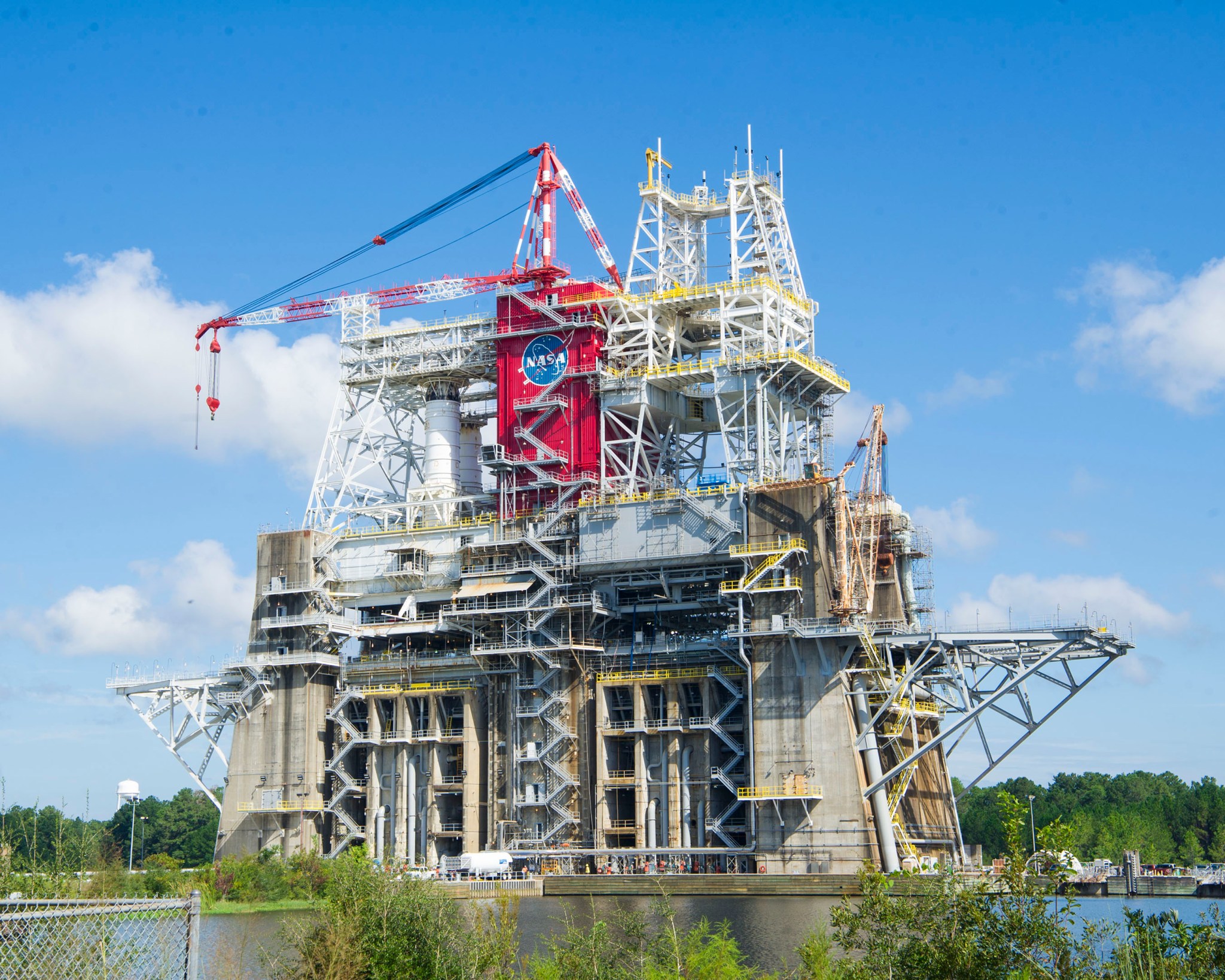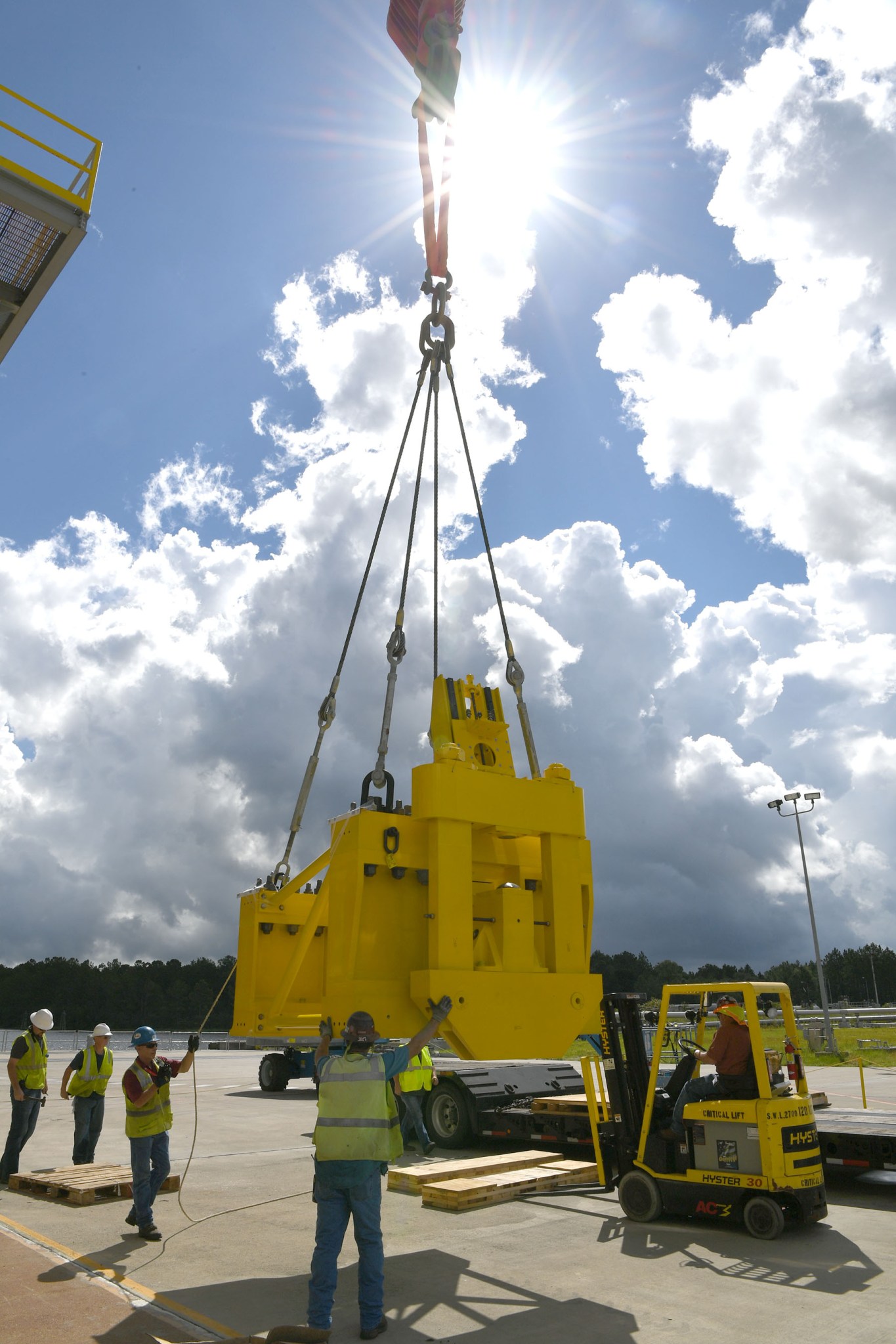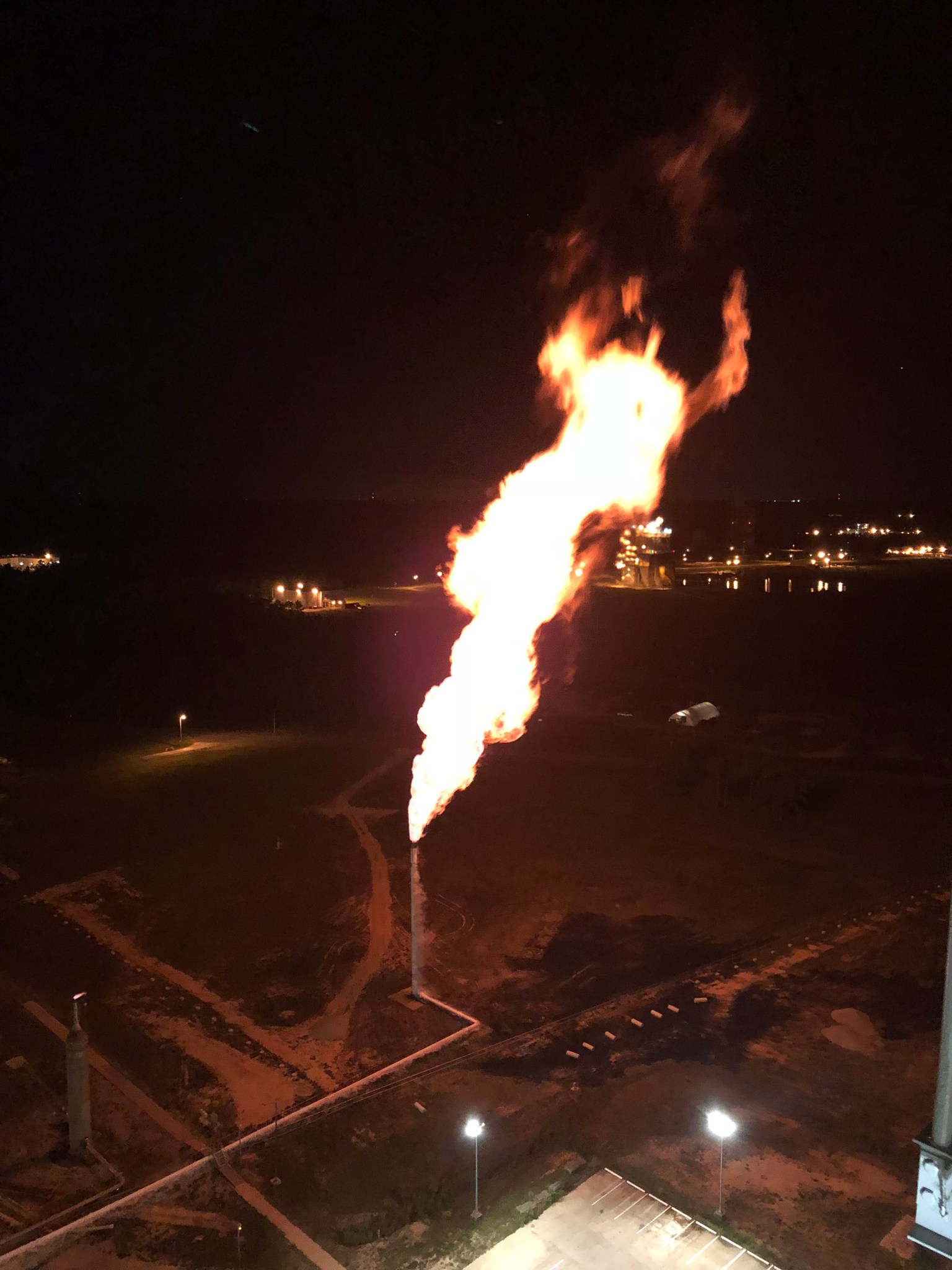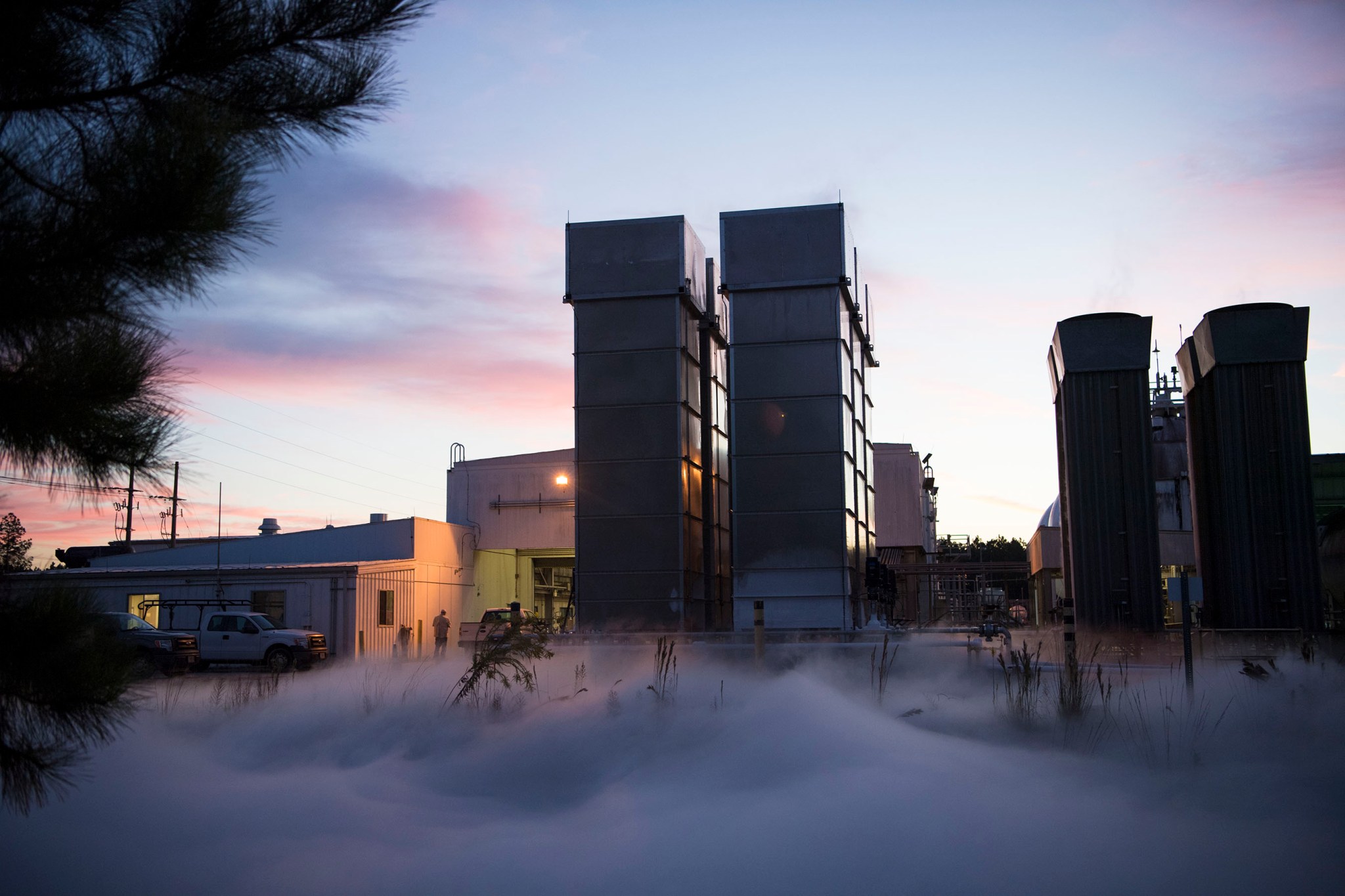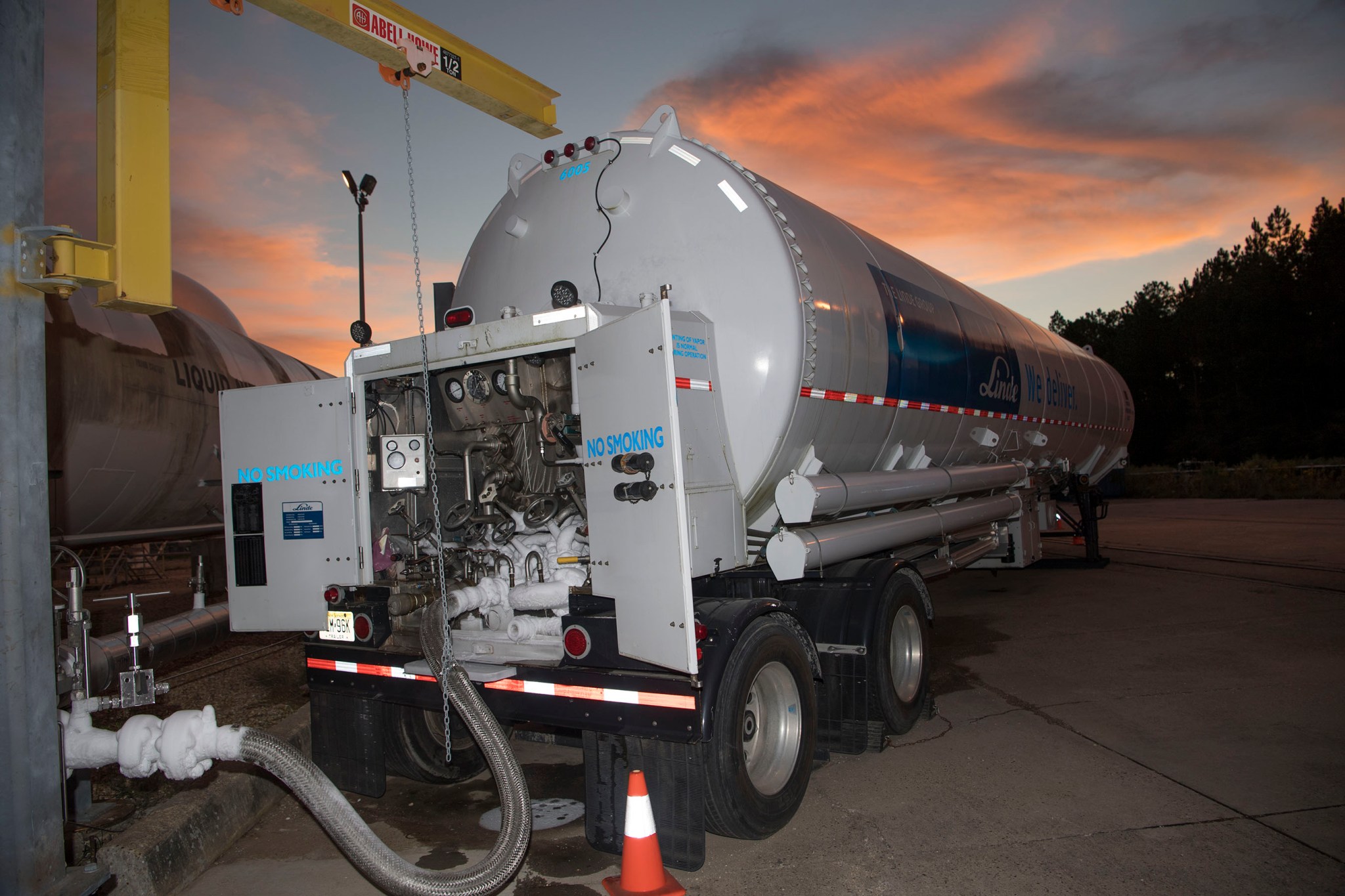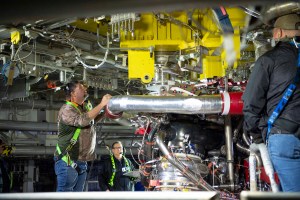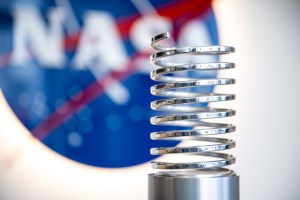NASA capped a six-year process this past month at Stennis Space Center near Bay St. Louis, Mississippi, setting the stage for testing the core stage of its new Space Launch System (SLS) rocket, designed to carry humans deeper into space than ever, including to the Moon and eventually Mars.
With completion of all major tasks and a successful high-pressure gas facility stress test, Stennis reached an all-but-complete state of readiness for SLS core stage testing on its B-2 Test Stand.
“This is a great accomplishment and the culmination of a six-year effort by an incredible team of people,” Stennis Director Rick Gilbrech said. “With this step, we move even closer to seeing the first launch of the rocket and a new era of space exploration.”
B-2 Test Stand
After the core stage for the first mission arrives to Stennis, it will be installed on the B-2 Test Stand and tested with its four RS-25 engines firing simultaneously, as during an actual launch. This hot fire before launch is called a “green run” test.
With a pair of propellant cold flows and a key gaseous nitrogen test, B-2 Test Stand Project Manager Barry Robinson declared the B-2 stand had achieved 98 percent readiness status for the testing. All that is left is a final water flow check, special test equipment to be installed upon arrival and some tasks to be completed just prior to arrival of the actual SLS “pathfinder,” Robinson said.
The pathfinder is a structural replica of the core stage that will allow technicians to practice core stage maneuvers and to perform a “fit” test to prove facility modifications will match and handle the actual flight stage.
“Core Stage 1 testing is just around the corner,” said John Rector, SLS stages green run test manager at NASA’s Marshall Space Flight Center in Huntsville, Alabama. “The hard work and dedication of all teams and personnel involved have resulted in this milestone accomplishment in space history. The Stennis test and engineering teams have done an excellent job working with the SLS Program to provide solutions to the challenges the core stage design brought. Without them, this would never have been accomplished.”
The test stand, previously used to test the space shuttle propulsion system in the 1970s, now features upgrades of every major system, including the high-pressure system that provides hundreds of thousands of gallons of water needed during a test. Work also involved extending the large derrick crane atop the stand, which will be used to lift the SLS stage into place.
The most visible work came in repositioning of the existing Main Propulsion Test Article framework. The shuttle framework stood 61 feet tall and included about 1.2 million pounds of fabricated steel. After it was repositioned 20 feet horizontally, an additional 1 million pounds of steel was added to extend the framework 100 feet to house the taller SLS stage.
Including the lightning rods, the B-2 Test Stand now towers more than 300 feet high, ranking as one of the tallest structures in Mississippi.
High-Pressure Gas Facility
Even as the B-2 Test Stand was celebrating its milestone achievement, a team of high-pressure gas facility operators culminated years of planning and work to demonstrate that facility is prepared to produce the gases needed for SLS core stage testing, including unprecedented volumes of gaseous nitrogen.
“This was a big deal,” High-Pressure Gas Facility Manager Craig Chandler said. “There were a number of upgrades in preparation for SLS, and this test demonstrated they were complete. Both the facility and the team performed excellently throughout the exercise.”
The facility produces four high-pressure gases – air, helium, nitrogen and hydrogen – for testing and maintaining test systems. All four are needed for SLS testing, including an especially large and steady flow of gaseous nitrogen.
For SLS core stage testing, the bulk of the gaseous nitrogen will travel from the gas facility to the B-2 Test Stand through a 1.5-mile-long pipeline, then through five heaters. The stand heaters have a combined heating capacity of 880 kilowatts, equivalent to the energy needed to light 6,000 New Orleans streetlights – or more than 11 percent of the city’s total number.
The heated gas will be piped into the forward skirt, inner tank and engine sections of the core stage to help keep the compartments and their sensitive electronics warm and dry from the chill and moisture of the super-cold propellants used for testing. After the test, gaseous nitrogen also will be used to dry the core stage’s four RS-25 engines in unison.
During initial review, engineers found Stennis capable of providing the gaseous helium, gaseous hydrogen and high-pressure air needed. However, gaseous nitrogen capacity fell short, and the subsequent plan called for upgrades to existing gas facility equipment and changes in standard operating procedures. New installations at the facility included:
- new truck off-loading stations.
- new storage capabilities that significantly reduced the number of actual truck deliveries that would be needed on test day.
- an automated system for transferring liquid nitrogen from storage tanks to pumps, and six vaporizers to convert liquid nitrogen from storage tanks and trucks into gas.
The changes more than doubled the output capacity of the gaseous nitrogen system. To prove the upgrades were ready, operators planned an exercise with the designed plan to operate the gas facility exactly as would be done for a core stage test.
Beginning just before 8 p.m. on Oct. 18, two teams of operators in 12-hour shifts conducted the successful exercise. For 24 hours, the facility pumped 100 gallons per minute of liquid nitrogen from onsite storage tanks and 10 delivery trucks for a grand total of 144,000 gallons of liquid nitrogen to support the test.
“That translates to 24 eighteen wheeler loads of liquid nitrogen converted from a liquid to a gas and pushed through the cross-country piping system to the B-2 Test Stand,” Chandler pointed out. “Everything went smoothly, and it shows we can meet the SLS requirement. We’re ready.”
SLS core stage testing will mark a new chapter in Stennis history, which tested Saturn V stages and engines that carried humans to the Moon during the Apollo Program, as well as engines used to power 135 space shuttle missions. The site already is testing RS-25 engines that will help power the new SLS rocket on missions to carry humans deeper into space than ever.
For more about NASA’s new Space Launch System, visit
https://www.nasa.gov/exploration/systems/sls/index.html
For more information about Stennis Space Center, visit:





























